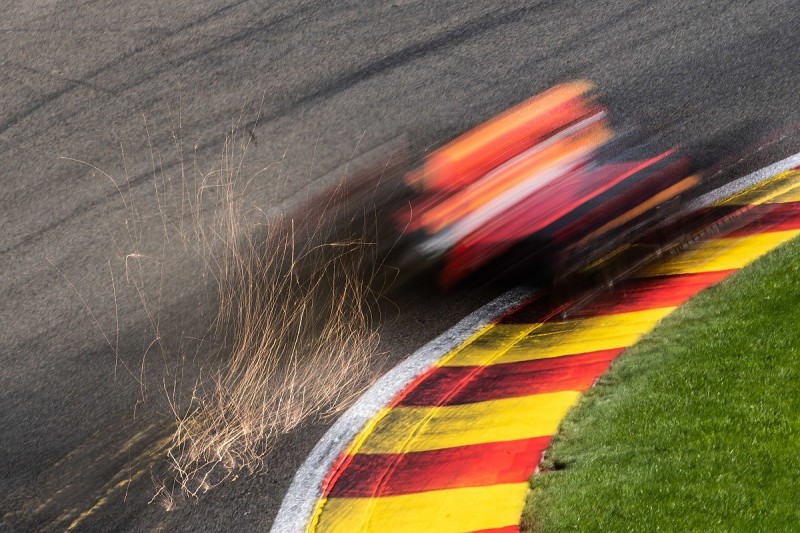Spa hopes to sign off planned Raidillon runoff change by end of '19
Spa hopes plans to change the Raidillon runoff can be signed off at the end of 2019, in the wake of fresh attention following last weekend's fatal Formula 2 crash

Renault Formula 1 junior driver Anthoine Hubert died after his car was hit at high speed by Juan Manuel Correa, who remains in hospital, in Saturday's F2 feature race.
The FIA's investigation into the crash is already underway, and one of the key issues relating to the incident will be the layout of the runoff area at Raidillon - and whether its asphalt surface was a factor.
Spa already had plans to revamp the runoff area at the corner for 2022 and add gravel traps, as part of its efforts to make the track safe for the Spa 24 motorcycle race that it is due to host that year.
But in the wake of Hubert's death, it is likely there will be scrutiny on the design of the gravel traps for cars and whether they should be introduced before 2022.
Spa circuit CEO Nathalie Maillet told Belgian press agency Belga: "The circuit has always worked with the FIA to improve safety.
"We have to await its report and analyse the exact causes of the accident.
"We are working towards a FIM Grade C licence. We are still in discussion with the FIA and FIM about the homologation of the circuit and work is [already] planned on Raidillon for the Spa 24 Hours for bikes, which will take place in 2022.
"The runoff areas will be expanded and carefully designed to avoid frontal impacts.
"We're not planning to modify the actual layout of Raidillon. But it's certain that we will install gravel traps. The regulations for bikes are more strict."

Maillet said any safety improvements required for bikes would be beneficial for other forms of racing.
"The fact that the circuit will conform to bikes will have a positive effect on cars," she added.
"Discussions are still ongoing about the exact location of the gravel traps, their depth and whether they will have to cover the full length of the corner or not.
"We will try to finalise everything by the end of the year so we can apply for the urban planning permits.
"This accident does not put in doubt the future of Formula 1 at Spa-Francorchamps. What happened is a racing incident. Of course we are all saddened by what happened.
"We have to continue developing the circuit. We will also continue to develop the extraction centre."
While F1 has favoured asphalt runoff areas over gravel traps more recently, race director Michael Masi said the FIA is constantly considering how safety can be improved.
"Safety is ever evolving," he told media after the Belgian Grand Prix.
"There are few of you in this room who have been involved in attending F1 races for a lot longer than me and have seen the upward evolution of safety in that effectively short period of time once different technologies become available and once different materials become available.
"Safety is an ever evolving process. It is for me not something that will ever end and I've said it before, and I will repeat it, safety is one of the core pillars of the FIA and part of why it exists.
"That was something that will just not stop. We will continue to research and look at things and improve things as best as we can."
Be part of the Autosport community
Join the conversationShare Or Save This Story
Subscribe and access Autosport.com with your ad-blocker.
From Formula 1 to MotoGP we report straight from the paddock because we love our sport, just like you. In order to keep delivering our expert journalism, our website uses advertising. Still, we want to give you the opportunity to enjoy an ad-free and tracker-free website and to continue using your adblocker.















Top Comments